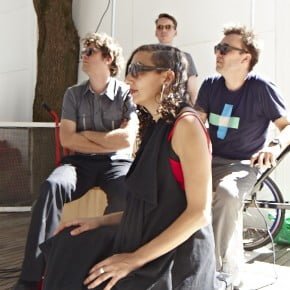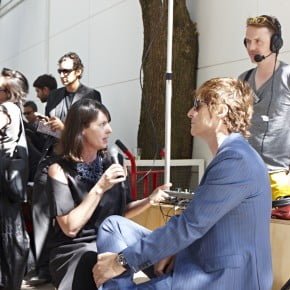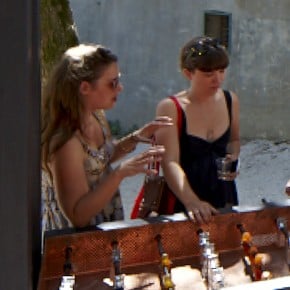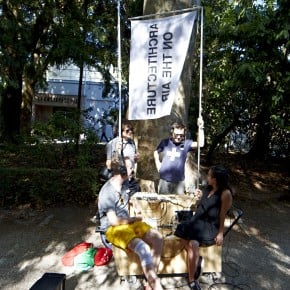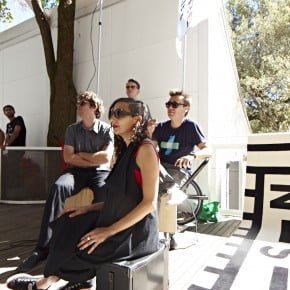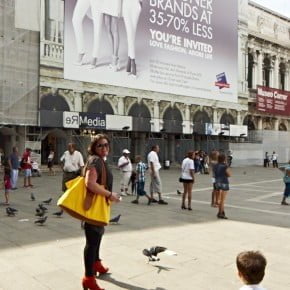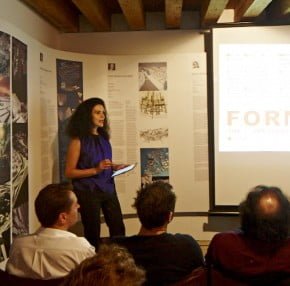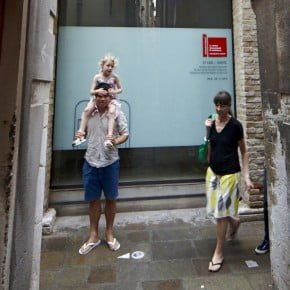Tania Davidge reflects on the diverse range of Australian women at in the 2012 Venice Architecture Biennale.
There are many women who practice at the ‘periphery’ of traditional architecture and yet contribute to the profession in significant ways. Unless they are registered or working in a traditional practice they can remain largely invisible. This article reflects on the diverse range of women in Australian architecture who participated in the 2012 Venice Architecture Biennale, Common Ground. These women are artists and curators, broadcasters and educators and some of them are even conventional architects. In light of the upcoming report on the Parlour survey, Where do all the Women Go? and the recent event Transform: Altering the Future of Architecture, it is an important time to highlight the diversity of architectural participation, to gain a broader understanding of how women contribute to architecture.
- Christine Phillips and the Radio Architects team.
- Fleur Watson.
- Lucy Humphrey and Claire McCaughan of Archrival.
The Biennale delivered a range of strong and varied projects from women in Australian architecture. The Australian exhibition, Formations: New Practices in Australian Architecture, explored practice structures that extend the boundaries of the traditional architectural framework. Fleur Watson (2112Ai), Claire McCaughan and Lucy Humphrey (Archrival) and Christine Phillips (The Architects) were members of the six architectural teams selected for exhibition, and whose ‘formations’ articulated the field of expanded practice. In addition, Anupama Kundoo, an Indian architect who teaches at the University of Queensland, was invited by the Biennale’s creative director, David Chipperfield, to exhibit in the Arsenale.

Maribor 2012 European Cultural Capital, 2112Ai: 100YC (100 Year City), curated by Fleur Watson and Tom Kovac, video in the Australian Pavilion.
Fleur Watson, co-founder and curator of the architecture and design gallery Pin-up, in collaboration with Professor Tom Kovac, exhibited Maribor 2012 European Cultural Capital, 2112Ai [Architectural Intelligence]: 100YC (100 Year City) in the Australian Pavilion. The project, the outcome of a global architecture design studio, investigated potential urban visions for the city of Maribor in Slovenia, projected 100 years into the future. At the Australian Pavilion, these urban visions were presented in a contemplative video, to a soundscape by cellist Judith Hamann. The video, when shown in concert with the architectural proposals exhibited at the Slovenian Pavilion, added a richness to the work that a straightforward project exhibition would lack.
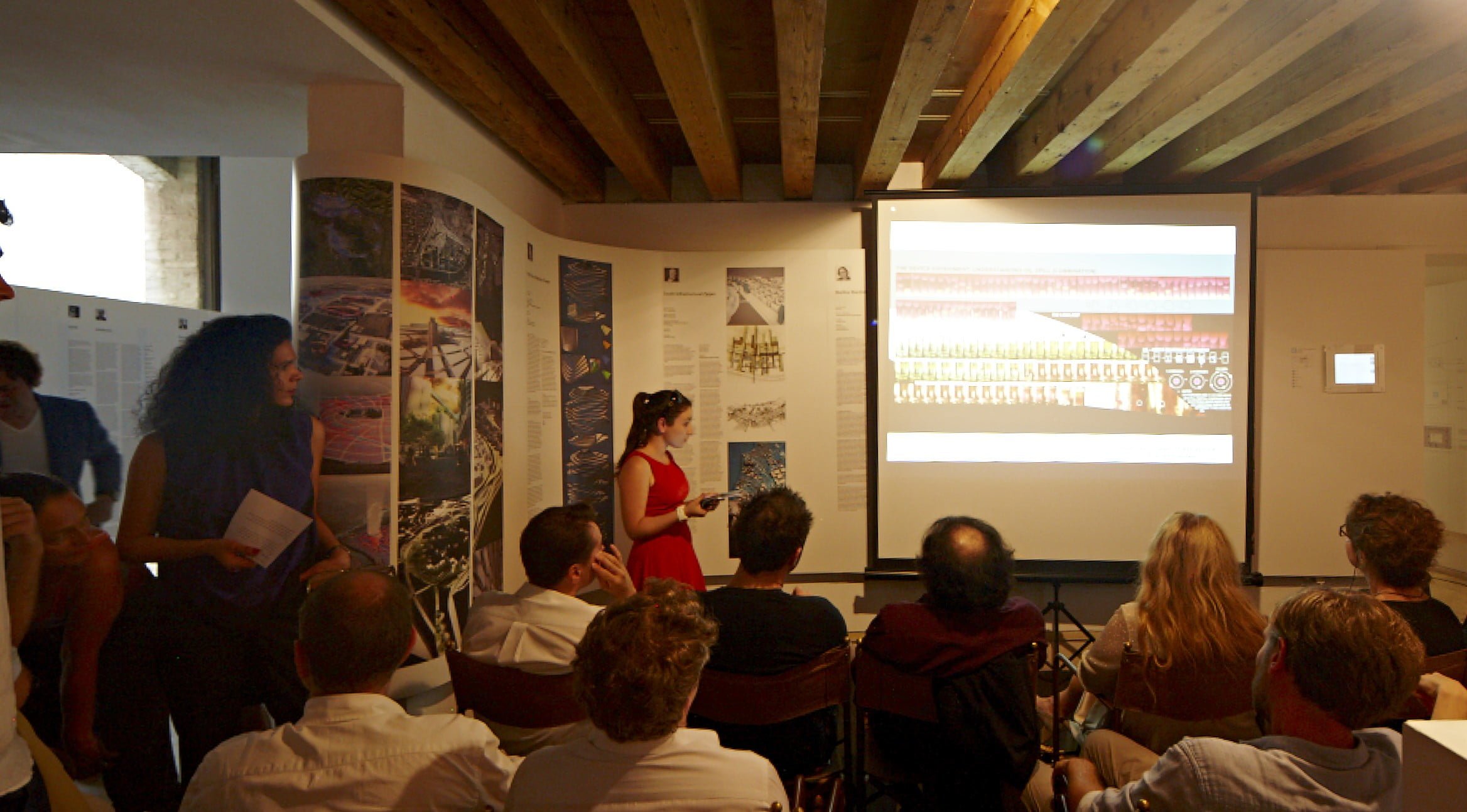
Proposals fromMaribor 2012 European Cultural Capital presented in the Slovenian Pavilion.
In the video work Watson’s curatorial skills made a complex project accessible and engaging. By drawing out the dominant themes from across the proposals – food security, responsive design, education and knowledge, issues of immigration, innovation and the role of the architect in the city in 100 years – Watson provided the filter or the ‘curatorial frame’ required for a project of this complexity to be communicated to a broad audience. As a curator she looked at the uncommunicated and invisible structures behind the work, to find a way to value them and make them present for the audience. Reflecting on the outcomes of the global studio Watson says, “When you deal in the cultural realm where you are working with artists and other creative disciplines there is often an anxiousness about coming into a city and imposing a view. This is where architecture is really powerful. I think architects are really good at finding a thread that can reveal something different or offer a new perspective about the city from the outside.” Architectural thinking helps us access new ways of understanding spatial issues by revealing hidden potentials. In a similar way, Watson’s skilled curatorial eye helps us access a very complex conversation around the city of Maribor and its future.

Arena Calcetto by Claire McCaughan and Lucy Humphrey.
Briefed to design an installation that reflected their practice formation, Claire McCaughan and Lucy Humphrey created an ambitious, interactive installation, Arena Calcetto, in the glade at the entry to the Australian Pavilion. McCaughan said of the work, “Because we are Archrival, we like to play on rivalry and use rivalry in the design process to create better work.” Drawing on the rivalry of the Venetian regattas, Archrival arranged in the clearing, four custom-built copper foosball tables anchored to the ground by heavy wooden piles and ballast. The timber support structures rose into the air, the tallest to ten metres, and evoked the masts of Venetian sailboats in full regatta competition, and the clearing became a playing ‘arena’.

Arena Calcetto within the pavilion.
The ambitious installation took a team of twelve people to assemble and involved over 100 people internationally. Archrival’s interest in interactivity and competition not only came through in the work but was also a force in its development. Humphrey and McCaughan structured a series of design, fabrication and detail workshops and the final components, the foosball players, were sourced through an international open call and a global workshop. In all, they received twenty-seven teams of beautiful, handcrafted players—made of timber, plastic and even soap. The sounds of competition could be heard from beyond the site and were a drawcard for the Australian Pavilion which was tucked away, off the beaten track from the main Biennale action.
Christine Phillips, as part of the Triple R radio program, The Architects, spent the Vernissage with her co-hosts Stuart Harrison, Rory Hyde and Simon Knott producing mobile radio coverage of the Biennale. As an architect that works primarily in tertiary education, Phillips takes architecture to the public realm, promoting professional equity and advocating for our emerging practitioners. Phillips is an important voice in architectural discourse. She believes equity is one of the primary issues the profession needs to address in order to maintain relevance and that giving a chance to our younger architects is ‘vital to ensuring a great future for architecture in Australia’.
Trundling their mobile cart around the Giardini, The Architects interviewed and critiqued exhibitors, curators and architects – of the famous and the not so famous variety. The radio show provided enthusiastic, intelligent and opinionated commentary of the Biennale. They unpacked the stories behind the exhibitions and added their own assessment to the mix. In addition to all of this, Phillips looked after her seven-month-old baby with the help of her partner, and chaired one of the ‘flash formations’ (a kind of mobile, after hours, magic carpet discussion panel), which included Jeremy Till, Richard Goodwin, Gerard Reinmuth, Anthony Burke and Fleur Watson at Bar Naranzaria on the edges of the Grand Canal. Like a true professional Phillips made it look effortless, working long days and getting little sleep while sipping Prosecco in the sun and broadcasting radio from the deck of the Australian Pavilion.

Rory Hyde, Christine Phillips and Daisy.
The cross-section of work presented by women at the Biennale was clearly articulated in the area of the Arsenale that was curated by the Biennale’s creative director, David Chipperfield. Located in adjacent rooms, Anupama Kundoo and Zaha Hadid presented very different approaches to architectural practice and the exhibition of architecture. The Hadid exhibition was formally and tectonically seductive and positioned Hadid’s work within a long line of research related to the formal and structural capacity of building materials. To the right, upon entering, Hadid’s professional and academic research (including her students’ projects) was exhibited and to the left, in the half light of the Arsenale, abstract sculptural models of her work hung from the rafters at head height, denuded of architectural articulation – beautiful formal studies lit up like hovering alien spacecraft.
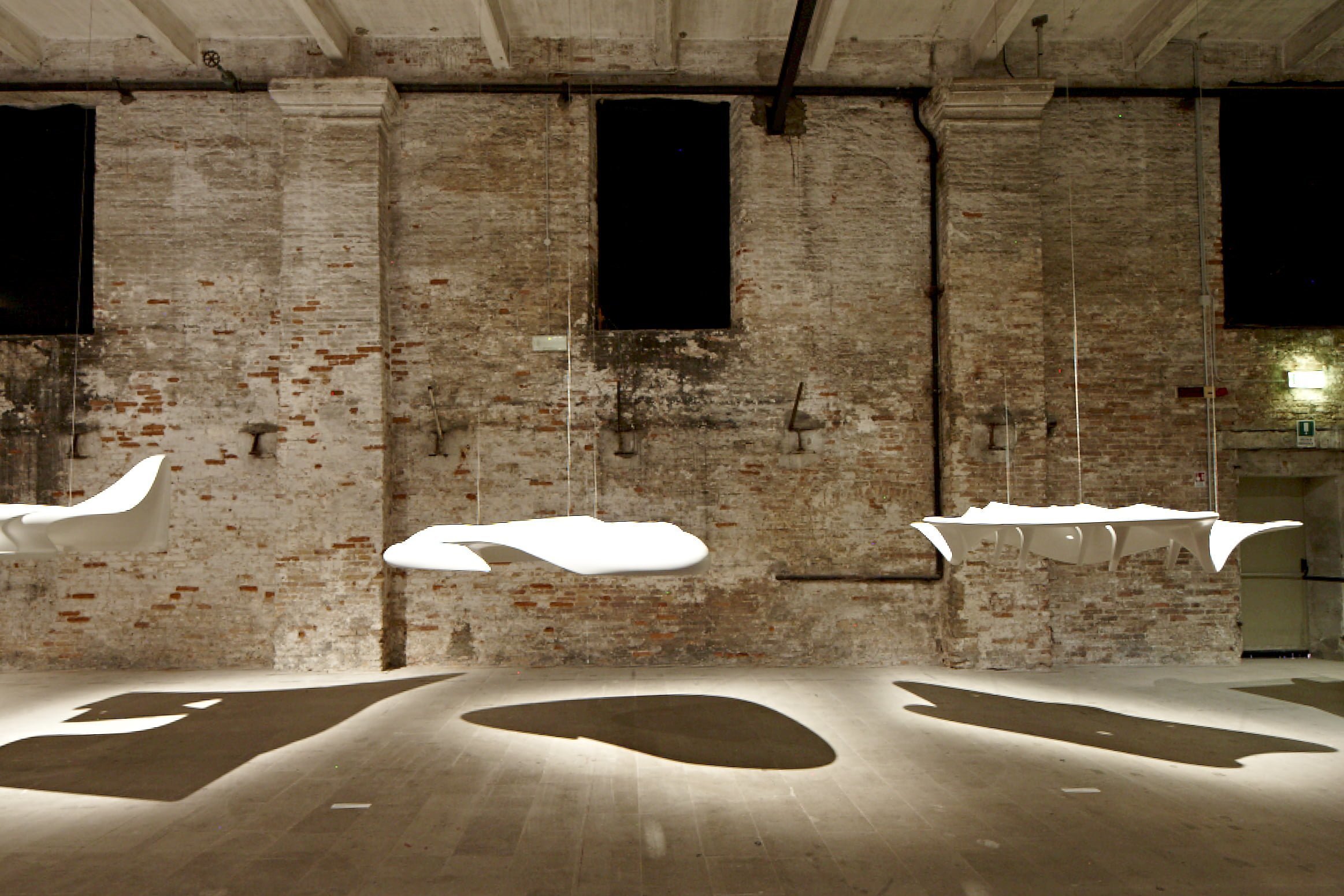
Zaha Hadid installation in the Arsenale.

One to One by Anupama Kundoo in the Arsenale.
By contrast, in the following room, Kundoo’s work could not be mistaken for anything other than building. Using traditional southern Indian brick work to form the walls of the full scale installation, Kundoo recreated a fragment of the spaces of her own house in Auroville, Tamil Nadu, within the Arsenale. Students and staff from the University of Queensland, with the help of local Venetian students, worked alongside Indian craftspeople and were assisted by a multicultural array of professionals to construct the project. Surprisingly it was one of the few projects in the 2012 Biennale that presented a one-to-one scale architectural experience. When inserted into the Arsenale, Kundoo’s Wall House installation explored ideas of threshold and transition. The dining area was located centrally, on axis with the circulation through the Arsenale, accentuating the programmatic centrality of the dining area to our modern conception of the house. As the place where we inadvertently meet and come together socially, the translation of the dining room from India to the Arsenale was playful and clever. The materiality and form of the house resonated with the materiality and form of the Arsenale and the singular expression of the project provided a respite from the information overload of the Biennale.

Detail of Anupama Kundoo’s Wall House within the Arsenale.
It is a strange and unusual thing for an architect who deals in context to reframe an existing work in a completely different context. What does the house gain or lose by being removed from its original context? One could imagine that the actual house would be powerful in the setting it was designed for. Its openness to the landscape would add a level of experience that the confined warehouse-like space of the Arsenale could not provide – the light, the sounds, the flow of air, and the activity of domesticity. However in many ways, the shift in context produced a completely new powerful work. Kundoo explains, “These two meet in their similarities and their differences. When you establish the similarities you can celebrate the differences.”
However, for me, the real power of the installation was not in its association with the building that enclosed it, but in the fact that it provided a place to contemplate this other world where the ‘real’ house actually exists—a space to think critically about how we consume architecture in contemporary discourse (as opposed to experiencing it), and the forces at play that consume us. It allowed me to just sit still for long enough to fill in the gaps, imagining the trees, the weather, the rest of the house—after all, as architects, this is what we are trained to do.
It is important that we remember that the power of architecture lies not only in the built outcome but also in its production and its imagining. Architecture does not simply reside in the built object; if it did all building would be considered architecture. Architecture instead resides in a multitude of practices that include and surround the act of building. There are many ways to contribute to this production and it is important that we work at making them visible.
- Juliet Moore.
- Vivianne Mitsogianni presenting in the Slovenian Pavilion.
- Rachel Neeson, Matt Chan and Alice Murcutt.








